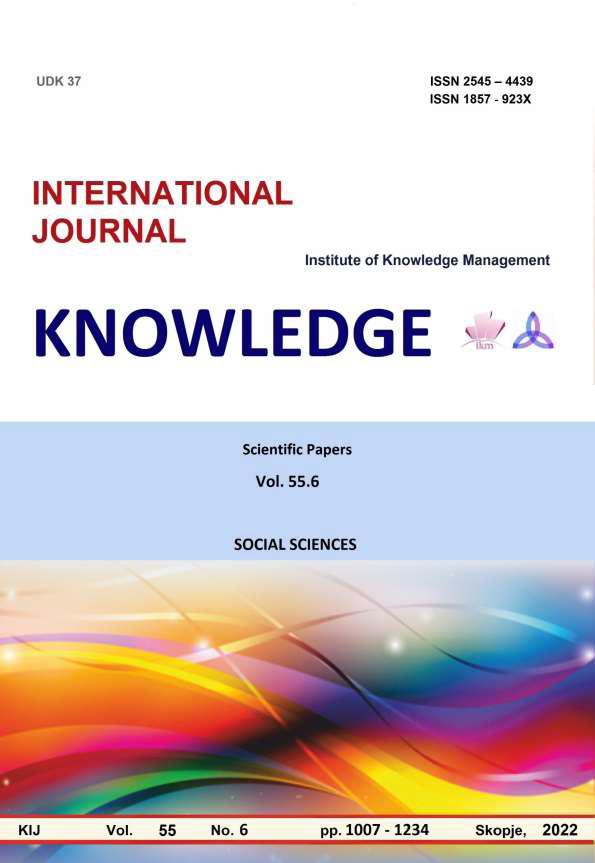MEASURING BUSINESS PERFORMANCE: A STRATEGIC MAP OF THE FUTURE
Keywords:
Performance measurement, the responsibility accounting, map of the balanced indicators, company perspectiveAbstract
The positioning of a company in the modern business environment is characterized by the definition of its
mission, that is, the purpose of business, the basis for choosing long-term, strategic goals as the driving force of
future business activities. Production processes are constantly being redesigned and improved, and there are always
strong domestic and international competitors. Running a company in this way allows managers to better understand
the basic causes of costs, in order to improve performance more effectively. The traditional responsibility
accounting model based on the financial responsibility emphasizes the financial performance of organizational units
and rewards and evaluates the operation by using the static standards of financial value: budget, standard costs. The
competitive success of a company is fundamentally defined by the professional knowledge and skills of the
management. The company operates in a dynamic environment that requires constant improvement. For this reason,
the responsibility accounting, based on strategic importance, was developed. One of the critical factors in the
success of implementing competitive strategies on the market is the performance measurement system. How to
establish a balance between different approaches to measuring a company's performance? The comprehensive
framework that connects the company's strategic goals with a coherent set of performance measures is the map of
balanced indicators, the Balanced Scorecard - BSC.
Balanced Scorecard- BSC enables a business company to create the strategic focus by translating strategy into
operational goals and performance measures from four different perspectives: financial perspective, customer
perspective, internal business process perspective and innovation and learning. The BSC model gives a company the
structure that expresses its vision and strategy in the form of goals and benchmarks. This is not enough, because the
organization still faces the challenge of building a system for collecting relevant information and making that
information available to stakeholders. Information technology must help in that segment. Unlike the industrial era,
the IT era gives priority to the use of intangible assets, which requires the development of a completely different
metric for evaluating the success of a business
References
Belak, V., Kulović, DŽ., & Mekić, E. (2022). Balanced Scorecard s primjerima u Excelu, Perfecta, Sarajevo.
Bhimani, A., Horngen, C., & Foster, G. (2018). Upravljačko računovodstvo i računovodstvo troškova, prevod, Naklada Mate Zagreb, (780-790).
Domanović, V. (2010). Balanced Scorecard- mogućnosti i efekti primjene, Ekonomski fakultet Kragujevac.
Hansen, D.R., & Mowen, M.M. (2013). Cornerstones of Cost Management, South-Western, Cengage Learning. (680-715).
Hegaty, M., & Hegazy, K. (2020). The Balanced Scorecard: Measures That Drive Performance Evaluation in Auditing Firms, https:// doi.full /10.1177/0148558X20962915
Jablan Stefanović, R. (2014). Interni obračun, Centar za izdavačku djelatnost Ekonomskog fakulteta u Beogradu, Beograd, (445-464).
Kaplan, R., & Norton, D. (2004). The Strategy-Focused Organization: How Balanced Scorecard Companies Thrive in the New Business Environment. Harvard Business Press.
Niven., P. (2010). Balanced Scorecard Step-by-Step: Maximizing Performance and Maintaining Results. Wiley
Radić, S. (2019). Teorijski i metodološki aspekti uticaja intelektualnog kapitala na finansijske performanse, Doktorska disertacija, Ekonomskog fakulteta u Beogradu, Beograd, (73-77).
Traver, E., & Brock, T. (2022). What Is a Balanced Scorecard (BSC), How Is It Used in Business, Investopedia





